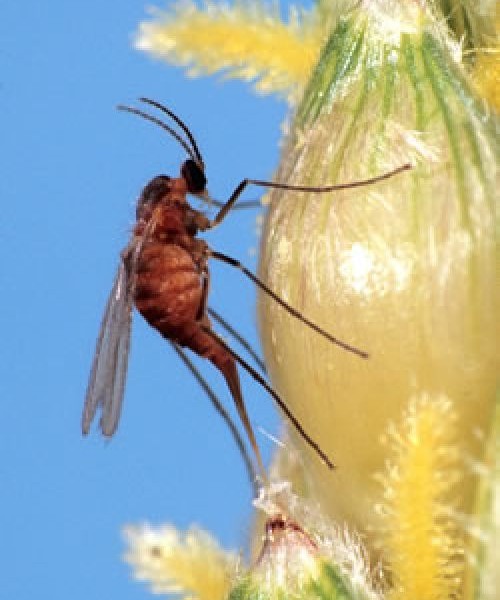
Sorghum Midge
Sorghum Midge (Stenodiplosis sorghicola) is a mosquito-like orange fly, 1.5 to 2 mm long, with very long antennae. Females are larger than males and have a slender ovipositor on the rear of the abdomen. It attacks grain sorghum and forage sorghum. Midge larvae destroy developing seed. One larva is enough to prevent seed development. On midge-susceptible hybrids, the progeny of each egg-laying adult on a head destroys 1.4 g of grain. High populations on susceptible hybrids can completely destroy the crop. Other causes of head damage include heat and moisture stress, but sorghum midge damage may be distinguished by the empty white pupal cases protruding from the glumes and emergence holes through the tips of glumes. Risk period is during flowering from December to March.
